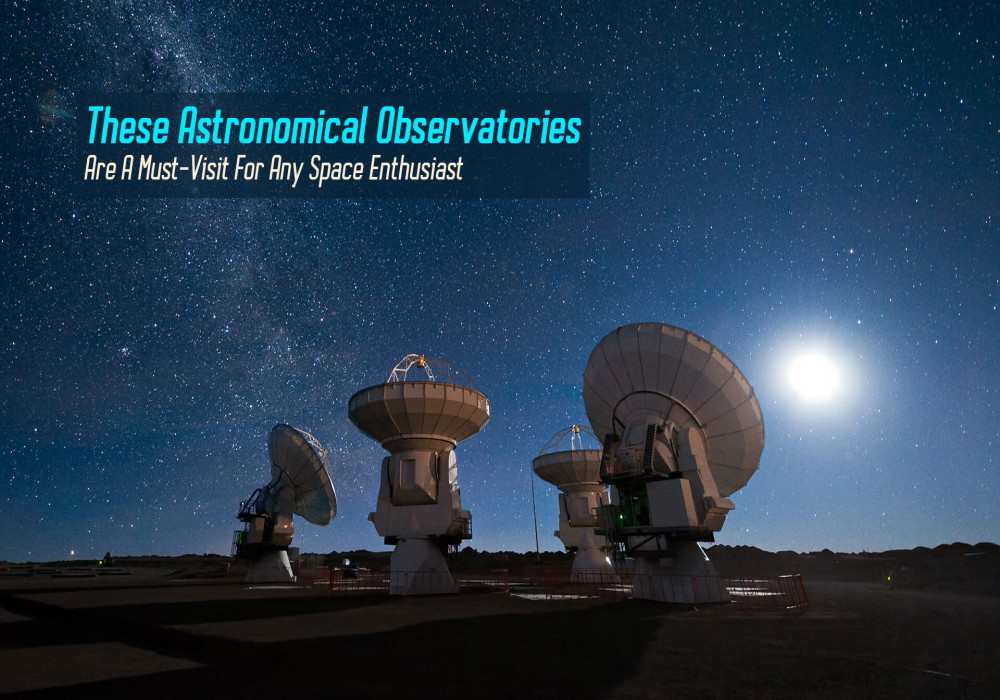
Last Updated At: 05-Aug-2024
Must-Visit Astronomical Observatory For A Space Enthusiast
The outer and endless expanse of the dark space has always been a topic of immense curiosity for most of us. The very thought and the idea that what lies beyond acts as a catalyst of tireless and unending thought spirals in our minds giving rise to various theories and beliefs.
It is true that somewhere in our hearts, we all want to experience and get to know how all this came into its existence which gives rise to the ultimate question - “How the universe was born?”
However, if not in reality, then one can have the chance to experience the universe by visiting space observatories, planetariums, etc. Seeing the wide expanse of the star-lit sky here is not less than an experience of a lifetime.
And in India, there are certain places that are open to visitors for stargazing and encouraging Astro-tourism in India. Let’s explore them.
Aryabhatta Astronomical Observatory, Nainital
Uncovering the layers of the night sky with patience is probably one of the most interactive experiences which you could ever have and remember for a very long time. From this observatory, you can even see the rings of Jupiter. Situated at Manora peak, this autonomous institution works under the department of science and technology, govt of India. This museum is open to the public on all days, and special permission is required for night-time shows.
Astronomical Observatory, Ladakh
This astronomical observatory is also operated and managed by the Indian Institute of Astrophysics. Currently, it is the ninth highest observatory which is located at an elevation of 4,500 metres. Standing on Mt. Saraswati, it would take at least 10 hours to drive to this place from Leh. It is the second-highest astronomical tower in the world. This site has got 2 telescopes namely the Himalayan Chandra Telescope and the other one is High altitude gamma-ray telescope.
Vainu Bappu Observatory, Kavalur
Its origin dates back to the year 1786. It was when William Petrie had set up his private observatory at his house and which was later called the Madras Observatory. Operated by the Indian Institute of Astrophysics IIA, this site is a great place for gazing into the wide expanse of the endless space. It was also the largest telescope in India till another telescope of 3.6-meter dimension was set up in the Nainital Observatory named ARIES.
This observatory has been named after M.K. Vainu Bappu who was the former astronomer and also the director of the Kodaikanal observatory. If you are thinking about visiting this place then you should head to Kavalur - a small village located amid the sandalwood forests of Javadi hills.
Kodaikanal Solar Observatory, Tamil Nadu
The Kodaikanal Observatory is also managed and operated by IIA, the Indian Institute of Astrophysics. It is situated in the Palni hills in Southern India and is among the only two observatories which possess over 100 years of data on the Sun along with its influence on our planet such as its ionospheric surroundings, geomagnetic waves as well as surface observations.
Now, what is even more interesting to know is that the preservation job of this place has been performed by the same generation of the family over the years. Currently, Mr Devendra is the one who is handling this job just like his father and his grandfather.
Ooty Radio Telescope, Ooty
The dimensions of the Ooty Radio Telescope are quite immense. It is a 1,740 and 98-foot wide machinery having a paraboloid shape. It is a part of the National Centre for the Radio. Its titled location at 11 degrees allows the telescope to get track of the celestial bodies for as long as ten hours.
The surface of this telescope is made up of 1100 thin stainless steel wires which are connected parallelly with each other. It will blow your mind to know that this piece of machinery is also capable of detecting a mere 1-watt signal that might be coming from as far as 10 million km away in space.
Udaipur Solar Observatory, Rajasthan
The Udaipur solar observatory is another interesting spot for solving the riddles of the stars. Moreover, it is also a GONG (Global Oscillations Network Sites) site in the world and holds the second rank to have a unique multi-application solar telescope.
The purpose of this telescope is to have a detailed study of the overall solar activity. What’s more, is that it has been strategically located amid the scenic views of nature. The water body which surrounds it decreases the air turbulence by manifolds which then significantly helps in improving the image quality.
Mt Abu Infrared Observatory (MIRO), Rajasthan
Located at a height of 1680 metres on Gurushikhar mountain of the Aravali range. It is the first facility in our country which has been specifically designed for observations of celestial objects. Furthermore, the very first light image of the Star Alpha was acquired with a 1.2 m telescope which was on 19th November 1994. This made all the doubts cleared regarding its optical quality.
To find information about such interesting travel getaways in India stay tuned with adotrip.
--- Published By Rohan Bhalla
Latest Blogs

17 Best Places for 2 Days Trip from Delhi

Top 10 Hill Stations Near Bangalore for an Unforgettable Get...

Top 10 Hill Stations Near Chennai For a Perfect Getaway

10 Best Hill Station Getaways Near Gurgaon for Peace Seekers

10 Astonishing Underwater Temples of India You Must Visit in...
Speak to our experts
Popular Flights
Jaipur to Delhi Flights
Udaipur to Amritsar Flights
Kochi to Guwahati Flights
Bangalore to Lucknow Flights
Ahmedabad to Raipur Flights
Srinagar to Patna Flights
Thiruvananthapuram to Jammu Flights
Amritsar to Bhubaneswar Flights
Bhubaneswar to Patna Flights
Mumbai to Srinagar Flights

 Dubai
Dubai Malaysia
Malaysia USA
USA






